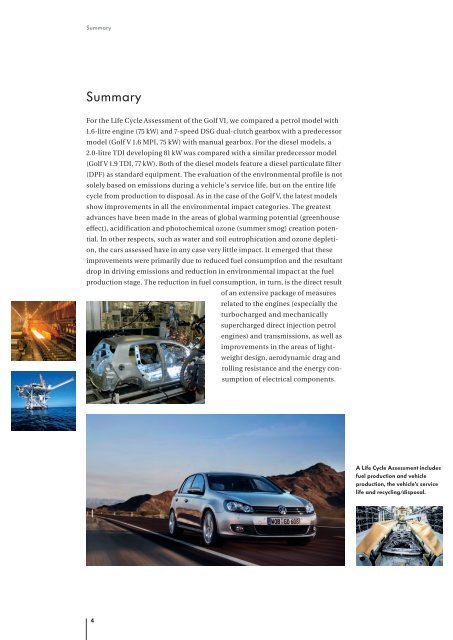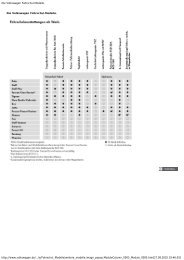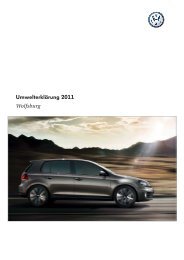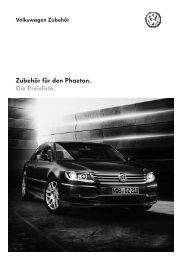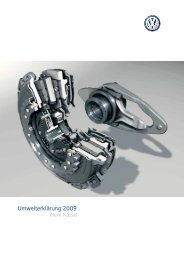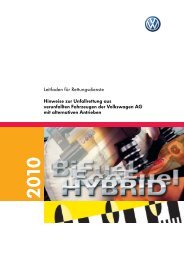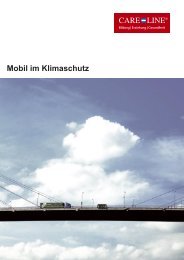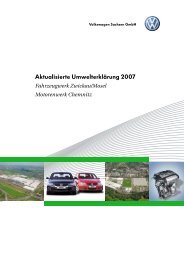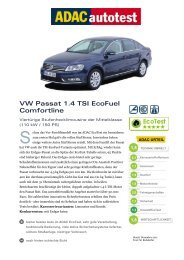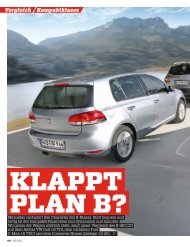Detailed Version - Volkswagen AG
Detailed Version - Volkswagen AG
Detailed Version - Volkswagen AG
You also want an ePaper? Increase the reach of your titles
YUMPU automatically turns print PDFs into web optimized ePapers that Google loves.
Summary<br />
Summary<br />
For the Life Cycle Assessment of the Golf VI, we compared a petrol model with<br />
1.6-litre engine (75 kW) and 7-speed DSG dual-clutch gearbox with a predecessor<br />
model (Golf V 1.6 MPI, 75 kW) with manual gearbox. For the diesel models, a<br />
2.0-litre TDI developing 81 kW was compared with a similar predecessor model<br />
(Golf V 1.9 TDI, 77 kW). Both of the diesel models feature a diesel particulate filter<br />
(DPF) as standard equipment. The evaluation of the environmental profile is not<br />
solely based on emissions during a vehicle’s service life, but on the entire life<br />
cycle from production to disposal. As in the case of the Golf V, the latest models<br />
show improvements in all the environmental impact categories. The greatest<br />
advances have been made in the areas of global warming potential (greenhouse<br />
effect), acidification and photochemical ozone (summer smog) creation potential.<br />
In other respects, such as water and soil eutrophication and ozone depletion,<br />
the cars assessed have in any case very little impact. It emerged that these<br />
improvements were primarily due to reduced fuel consumption and the resultant<br />
drop in driving emissions and reduction in environmental impact at the fuel<br />
production stage. The reduction in fuel consumption, in turn, is the direct result<br />
of an extensive package of measures<br />
related to the engines (especially the<br />
turbocharged and mechanically<br />
supercharged direct injection petrol<br />
engines) and transmissions, as well as<br />
improvements in the areas of lightweight<br />
design, aerodynamic drag and<br />
rolling resistance and the energy consumption<br />
of electrical components.<br />
4<br />
A Life Cycle Assessment includes<br />
fuel production and vehicle<br />
production, the vehicle’s service<br />
life and recycling/disposal.


